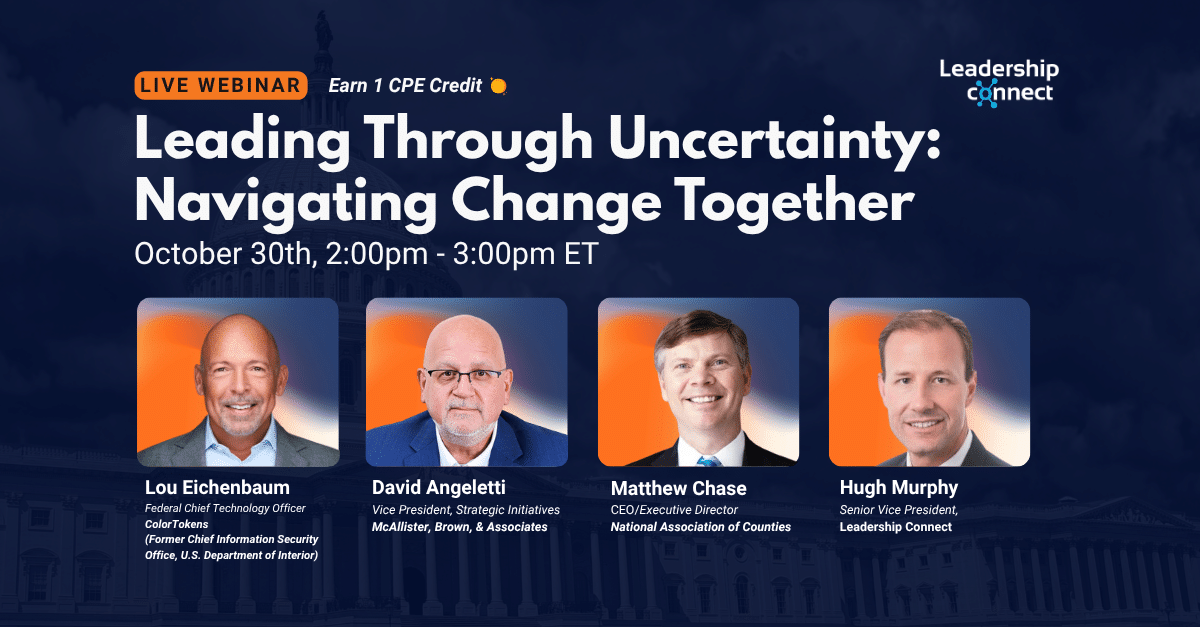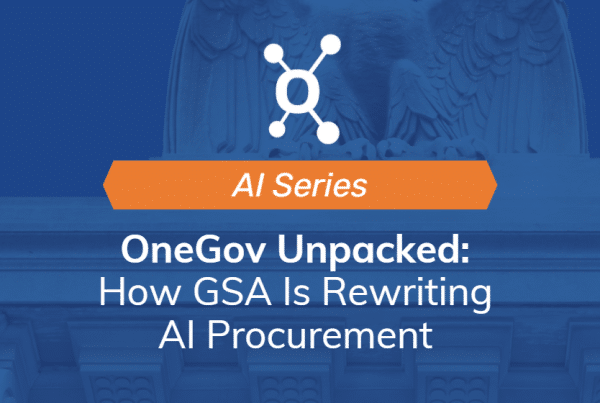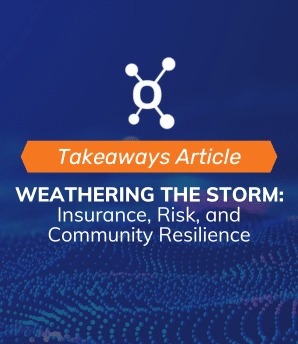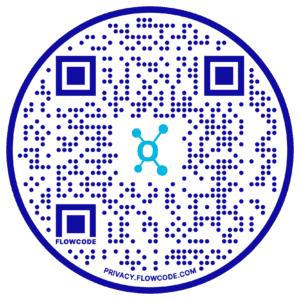Leading Through Uncertainty: Navigating Change Together
Whether facing a shutdown, navigating sudden leadership changes, or managing shifting policy timelines, uncertainty has become a constant across the public sector. On October 30, 2025, Leadership Connect convened experts from government, consulting, and industry for a candid, solutions-focused conversation about how leaders can maintain steadiness, support their teams, and continue delivering on mission—even when the path ahead is unclear.
The session drew from decades of collective leadership experience and focused on four key themes: resilience, communication, purpose, and collaboration.
Missed the conversation? Check out the highlights below and watch the whole webinar here and make sure to follow our Events Page to get in on the next conversation.
Resilience: Leading with Steadiness in Uncertain Times
The conversation opened with a focus on what it means to stay grounded during disruptive events like government shutdowns, budget delays, or rapid leadership turnover. Panelists shared approaches for maintaining momentum when roadmaps are paused and teams are stretched thin.
One theme that emerged clearly was the importance of intentional leadership habits—whether checking in with team members more frequently, creating space for honest dialogue, or embracing flexibility when plans change. Leaders noted that in the absence of formal structure, consistency in behavior becomes a stabilizing force.
The group also addressed burnout, acknowledging that long stretches of ambiguity can erode morale and focus. Recognizing early warning signs and protecting team bandwidth were seen as essential leadership responsibilities during prolonged uncertainty.
Communication: Finding Clarity When Answers Are Limited
When conditions change by the hour and official guidance is incomplete, the pressure on communication increases. Panelists shared how they’ve adapted messaging strategies to maintain transparency, even when definitive answers aren’t available.
A recurring insight was the value of stating what you do know—and naming what you don’t. Leaders who acknowledged the unknowns, while providing clarity on values and process, were seen as more credible and more trusted. In uncertain environments, people aren’t just looking for facts—they’re looking for signals of steadiness and intent.
Some leaders noted the importance of adapting communication styles across technical and non-technical audiences. Others emphasized the role of empathy and visibility—reminding teams they’re not operating in isolation.
Purpose: Staying Grounded in the Mission
Even when operations are disrupted, public sector leaders are still accountable to the communities and missions they serve. The discussion turned to strategies for helping teams stay connected to long-term goals—even as short-term plans are delayed or derailed.
Panelists emphasized mission alignment as a compass in uncertain times. When teams can clearly articulate why their work matters, they’re better equipped to adapt how they get there. Leaders spoke to the power of storytelling, cross-team visibility, and reflection to remind people of their impact—even when progress feels stalled.
Importantly, the group also acknowledged that purpose is not static. Reconnecting to the mission often means reframing roles and rethinking priorities, especially when old assumptions no longer apply.
Governance is the Link Between Policy and Practice
Modernization efforts often stall not because of lack of intent, but because of missing links between high-level strategies and operational execution. Panelists discussed how governance frameworks help bridge that gap.
Effective governance starts with agreement on data and AI principles, but must also include decision-making clarity and role alignment. Some agencies are combining data and AI responsibilities under one lead, while others are still siloed across functions. This fragmentation slows progress and increases the risk of inconsistent implementation.
Transparency was also emphasized as essential to public trust. Agencies need to explain how data is used, why decisions are made, and what safeguards are in place. Governance frameworks must be visible and responsive, especially as the volume and complexity of digital information continue to grow.
Collaboration: The Key to Navigating What’s Next
In the final section, panelists explored how collaboration—not just within organizations, but across sectors—is becoming critical for future-proofing. Disruption has revealed where silos and legacy processes limit responsiveness, and also where partnerships can accelerate innovation.
Speakers shared examples of multi-agency efforts, public-private coordination, and intergovernmental learning communities that helped sustain progress during uncertain periods. These models were most successful when built on shared outcomes, transparent communication, and long-term trust.
Looking ahead, leaders encouraged continued investment in relationship infrastructure—the systems, forums, and habits that allow coordination to flourish before a crisis, not just during one.
Staying Connected to Lead Through Change
As public leaders prepare for whatever comes next, reliable information and strong connections remain essential tools. In moments of disruption, the ability to quickly identify decision-makers, align across stakeholders, and maintain team cohesion can make all the difference.
Leadership Connect helps organizations do just that—by providing structured, up-to-date insight into the people, relationships, and networks that power the public sector. Whether you’re navigating complexity today or preparing for the future, Leadership Connect supports the work of staying clear, coordinated, and connected.
For a closer look at how Leadership Connect supports efforts across government, explore our products to see how we can help you lead with clarity and confidence.








